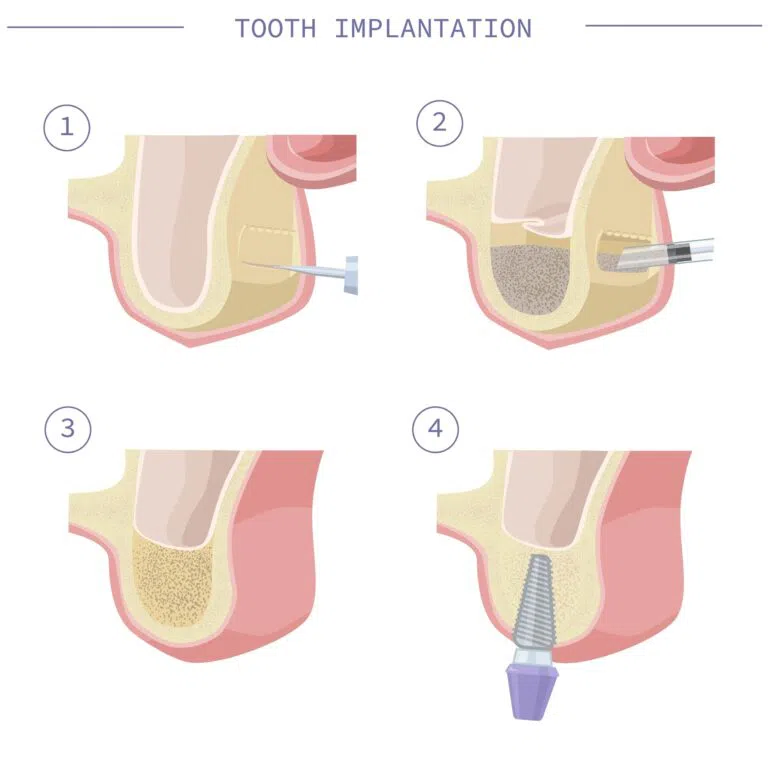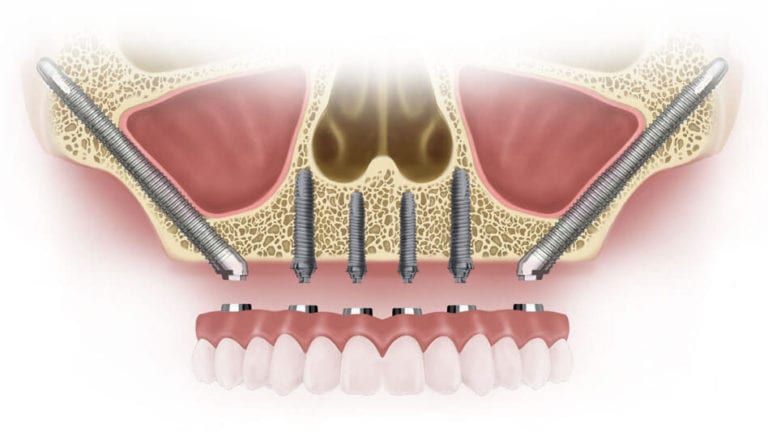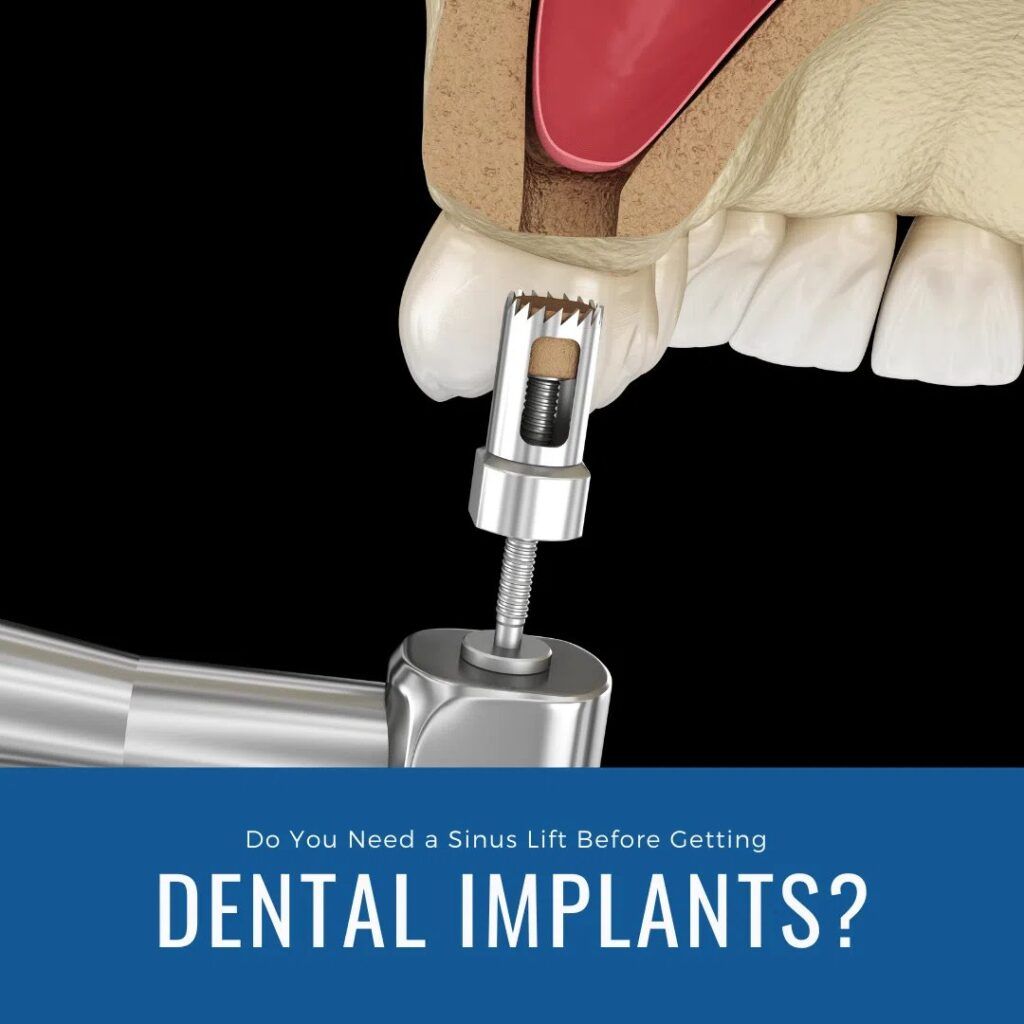If you are considering getting dental implants, it is important that you know about all of the possible procedures that may be necessary before getting them. One such procedure is a sinus lift. This blog post will explain what a sinus lift is, when it is necessary, and why it is necessary. We will also discuss recovery and when dental implants can be placed after having a sinus lift. Finally, we will discuss an alternative to a sinus lift known as zygomatic implants.
What is a Sinus Lift?

If you are considering dental implants, it is important to understand the facial anatomy involved. The upper jaw consists of a bone known as the maxilla. The sinus cavities are located on either side of the nose, just above the maxilla. They are air-filled cavities that help to lighten the weight of the skull and they also play an important role in the sense of smell.
A sinus lift is a surgical procedure that is performed when there is not enough bone height in the upper jaw for dental implants to be placed. In order to safely place dental implants, the sinus cavities must be lifted so that there is enough space for the implants. This procedure involves elevating the membrane that separates the sinus cavity from the mouth so that more bone can be placed in the maxilla to create a platform for the implant and prevent it from puncturing the sinus cavity. If the implants puncture the sinus cavity, then this can lead to sinus problems or recurring sinus infections.
Having a sinus lift performed prior to placing dental implants helps to prevent sinus problems from occurring after surgery. The sinus lift procedure is performed by making an incision in the gum tissue, and then a small hole is drilled in the bone. A graft of bone material is placed into this hole. The grafted bone will eventually fuse with the existing bone, lifting the sinus cavity and creating a strong foundation for dental implants.
Do I Need a Sinus Lift?
You may need a sinus lift if you have lost bone in your upper jaw due to tooth loss or periodontal disease. A sinus lift may also be necessary if you have had previous sinus surgery that has removed too much bone.
Your dentist will perform a thorough examination of your teeth and jaws to determine whether a sinus lift is needed. They will take x-rays of your mouth to assess the bone height in the upper jaw and determine if there is enough space for dental implants to be placed. If a sinus lift is necessary, your dentist will explain the procedure and what to expect.
What to Expect During a Sinus Lift
A sinus lift is usually performed under local anesthesia, although sedation may be used if you are anxious about the procedure. The surgery usually takes about an hour to complete.
During the procedure, your dentist will make an incision in your gum tissue. They will then drill a small hole in the bone and place a graft of bone material into the hole. The grafted bone will eventually fuse with the existing bone, lifting the sinus cavity and creating a strong foundation for dental implants.
Sinus Lift Recovery
After a sinus lift, it is normal to experience some swelling and bruising around the eyes and cheeks. You may also have some pain and discomfort. Your dentist will prescribe pain medication to help you manage any discomfort. It is important to take it easy and avoid strenuous activity for at least two weeks to allow your body to heal.
Recovery from a sinus lift can take several months, since it takes time for the body to grow new bone. During this time, it is important to avoid putting any pressure on the graft site. After the graft has healed, dental implants can be placed in the newly created space.
When Can Dental Implants Be Placed After a Sinus Lift?
After the sinus lift procedure, you will need to wait for the grafted bone to fuse with the existing bone. This can take anywhere from 3-6 months, sometimes longer. Once the graft has healed and there is sufficient space, dental implants can be placed.
Are there alternatives to having a sinus lift?

Since having a sinus lift can add months to the dental implant process, some people are interested in alternative procedures that avoid the need for a sinus lift. Zygomatic implants are an alternative to a sinus lift for people who do not have enough bone height in the upper jaw.
Zygomatic implants are ultra-long implants that are placed in the cheekbone instead of the jawbone. Since zygomatic implants are placed around the sinus cavities instead of underneath them, they do not require a sinus lift. They may also be a good option for people who smoke or have diabetes, because these conditions can make it difficult for the grafted bone to heal.
In Conclusion
In this blog post, we have discussed the sinus lift procedure. We have also talked about when a sinus lift may be necessary and what to expect during the procedure. Finally, we have discussed an alternative to a sinus lift known as zygomatic implants. If you are considering getting dental implants, talk to your dentist about all of the options available to you. They will be able to help you decide if a sinus lift or zygomatic implant is right for you.
Thank you for reading! We hope this blog post has been informative and helpful. If you have any questions, please feel free to contact us.

